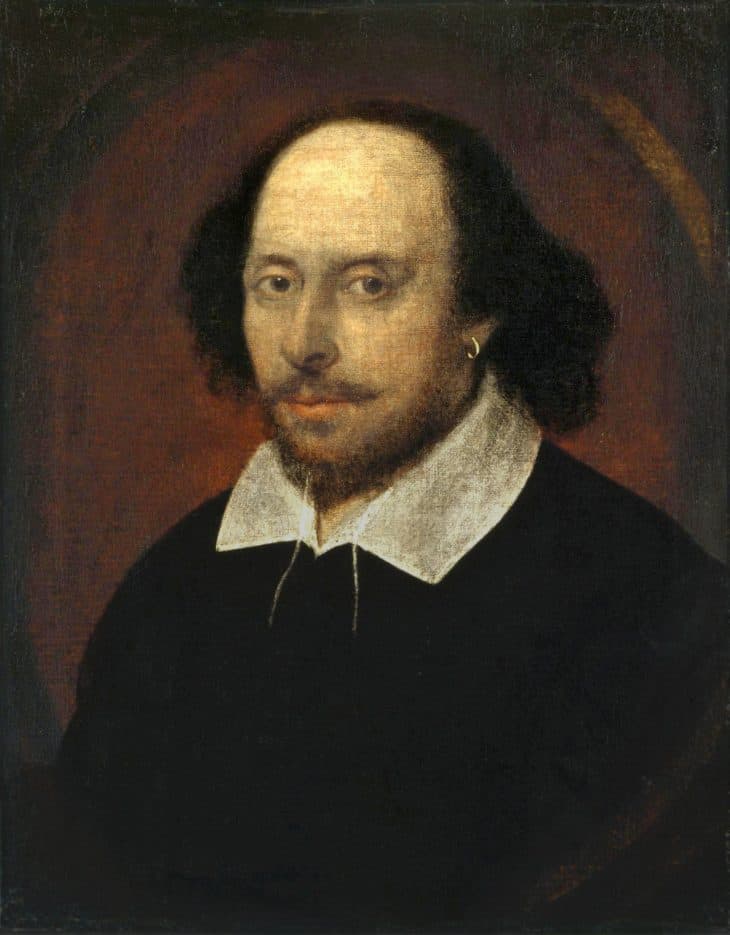
English writer Ben Jonson once described Shakespeare as being “for all time” as his works speak to different kinds of people. Truly a fitting description for a man who left such a profound mark in history. Even centuries after his death, people are still falling in love with the characters in his plays. He explored the human experience with so much depth and elegance. And his works leave a long and lasting impression on anyone who reads it or sees it. So much so, the English playwright’s work is included in widely used textbooks for English language courses. Ask any random high school or college student to share Shakespeare facts, and titles of plays like Romeo And Juliet and Macbeth will quickly come out of their mouths.
But that does mean that everybody loved what he did. Of course, the most important playwright in the English language also had his fair share of critics. One common criticism, in particular, is that Shakespeare’s The Merchant of Venice supports anti-Semitism.
Other people also say that Shakespeare is a fraud. Questions regarding the true authorship of his plays emerged 150 years after his death with scholars asserting that Shakespeare did not write his own plays.
Be that as it may, the accusations did not change the fact that his plays are translated into over fifty languages and performed across the globe for audiences of all ages. Learn more about this amazing storyteller and man by checking out this compilation of 80 Shakespeare Facts.
- William Shakespeare wrote 39 different plays in his life.
- 36 of these plays later became posthumously compiled into the First Folio.
- The compilation classified them into three categories: comedy, history, and tragedy.
- He also wrote another 154 sonnets and three narrative poems.
- None of Shakespeare’s poems were included in the First Folio.
- Tradition places Shakespeare’s birthday on Saint George’s Day, April 23, 1564.
- Shakespeare’s actual birthday, however, remains unknown.
- Historians have confirmed his birthplace to be at Stratford-upon-Avon.
- While it remains unclear when Shakespeare first began to write, English theaters already showed his work as early as 1592.
- People truly began to know Shakespeare by name in 1598.
- Shakespeare retired in 1609 as a result of the plague epidemic that hit London that year.
- He later returned to London in 1611.
- Shakespeare died at his home on April 23, 1616, aged 52, from unknown causes.
- He left behind his wife and their two daughters when he died.
- Their eldest daughter Susanna inherited the bulk of Shakespeare’s properties.
- Shakespeare was more commonly known as the “Bard of Avon,” referencing Avon County in England.
- He was known simply as the Bard.
- He is also commonly known as England’s national poet.
- Translations of Shakespeare’s work exist in all major world languages.
- Shakespeare’s work is performed on stage more than any other playwright.
William Shakespeare married Anne Hathaway.
Despite having the same name, Anne Hathaway has no relation to the popular actress of our time. According to her father Richard’s will, her first name isn’t actually Anne, but Agnes. This is something some historians do not believe. Hathaway and Shakespeare got married in 1582, and she was already pregnant with their first child at the time. They had three children together: Susanna, Hamnet, and Judith.
Shakespeare largely stayed out of history until 1592.
Much of what’s known about Shakespeare’s life before he became famous comes from before the birth of his youngest children. For one thing, it’s known that he had seven siblings, and that he was actually the third of his parents’ children.
It’s also known that his two older sisters both died in their infancy, leaving Shakespeare the eldest of his siblings by default. It’s also known that he attended King’s New School in Stratford, a traditionally boys-only school that continues to operate today.
Stories exist about Shakespeare in the years before he became famous.
One famous story actually has Shakespeare accused of poaching the property of a squire called Thomas Lucy. This forced Shakespeare to run to London, where he eventually wrote a scandalous story about the squire for revenge.
Another story claims that Shakespeare looked after horses for theater patrons in London. Historians tend to dismiss most of these stories, but some may have actual historical weight. John Aubrey, for example, once claimed that Shakespeare worked as a school teacher at this time. He did so supposedly under the pseudonym “Shakeshafte,” which had historians questioning the story, as the name was a rather common one.
Fellow playwright Robert Greene attacked Shakespeare in 1592.
Shakespeare had only begun his career at that time, but his quick success made other established writers see him as a rival. Greene described Shakespeare as an upstart and even referred to him as a jack of all trades.
This contrasted with Greene and his peers’ reputation as universal geniuses, which mostly came from their university education. In contrast, Shakespeare lacked a college background, leading Greene to see him and his work as second-rate.
Only the Lord Chamberlain’s Men performed Shakespeare’s play from 1594 onwards.
The Lord Chamberlain’s Men made up a playing company owned by its own actors and other members, including Shakespeare. They took their name from the office of their patron, Henry Carey, the 1st Baron Hunsdon.
Specifically, Wiliam held the office of Lord Chamberlain, and with it the responsibility of supervising entertainment at Court. In 1596, the company renamed itself Lord Hunsdon’s Men, after Henry’s son George became their patron.
They then became the Lord Chamberlain’s Men again in 1597, after George succeeded his father as Lord Chamberlain. And then in 1603, the company again renamed itself as the King’s Men, after King James I became their new patron.
They later built their own theater in 1599.
They called it the Globe Theater, based on the motto they adopted for the theater’s use. Specifically, the famous “all the globe’s a stage”. Some sources, however, replace “globe” with “world”. The land the theater stood on belonged to two members of the Lord Chamberlain’s Men, Richard and Cuthbert Burbage.
Actual records from the time provide no direct details of the Globe Theater’s design, but historical research over the centuries has pieced together a description.
The Globe Theater stood as an open-air amphitheater three stories high and could accommodate up to 3,000 people in the audience at any time. It stayed open for over a decade until it burned down in a fire in 1613. Rebuilt a year later, it stayed open until 1642, when an ordinance ordered the theater closed during the English Civil War.
A recreation of the Globe Theater was later built in 1997.
Sam Wanamaker first proposed rebuilding the Globe Theater in 1970, only to run into complications. In particular, the Globe Theater’s 16th century design ran into difficulties with conforming to modern fire standards.
Wanamaker refused to give up, though, and with the help of John Orrell, succeeded in redesigning the building in a way faithful to the original design, but up to modern standards. These include fire retardants in the theater’s thatched roof, as well as modern sprinkler systems.
For additional safety, the theater only offers 873 seats for the audience, but another 700 people can stand in the yard around the theater’s set. The recreated theater also includes a modern gift shop, lobby, restaurant, and visitor’s center.
Shakespeare had a warning placed on his tomb.
The tomb rests in the chancel of the Holy Trinity Church in his hometown of Stratford-upon-Avon. The stone slab over the tomb has his epitaph, which Shakespeare prepared before he died. In the epitaph, he cursed anyone who disturbed his grave and blessed those who respected it.
This led to a 2008 renovation of the church to proceed very carefully, to avoid disturbing Shakespeare’s tomb and potentially bringing down his curse.
Many scholars have questioned if Shakespeare really wrote all his works.
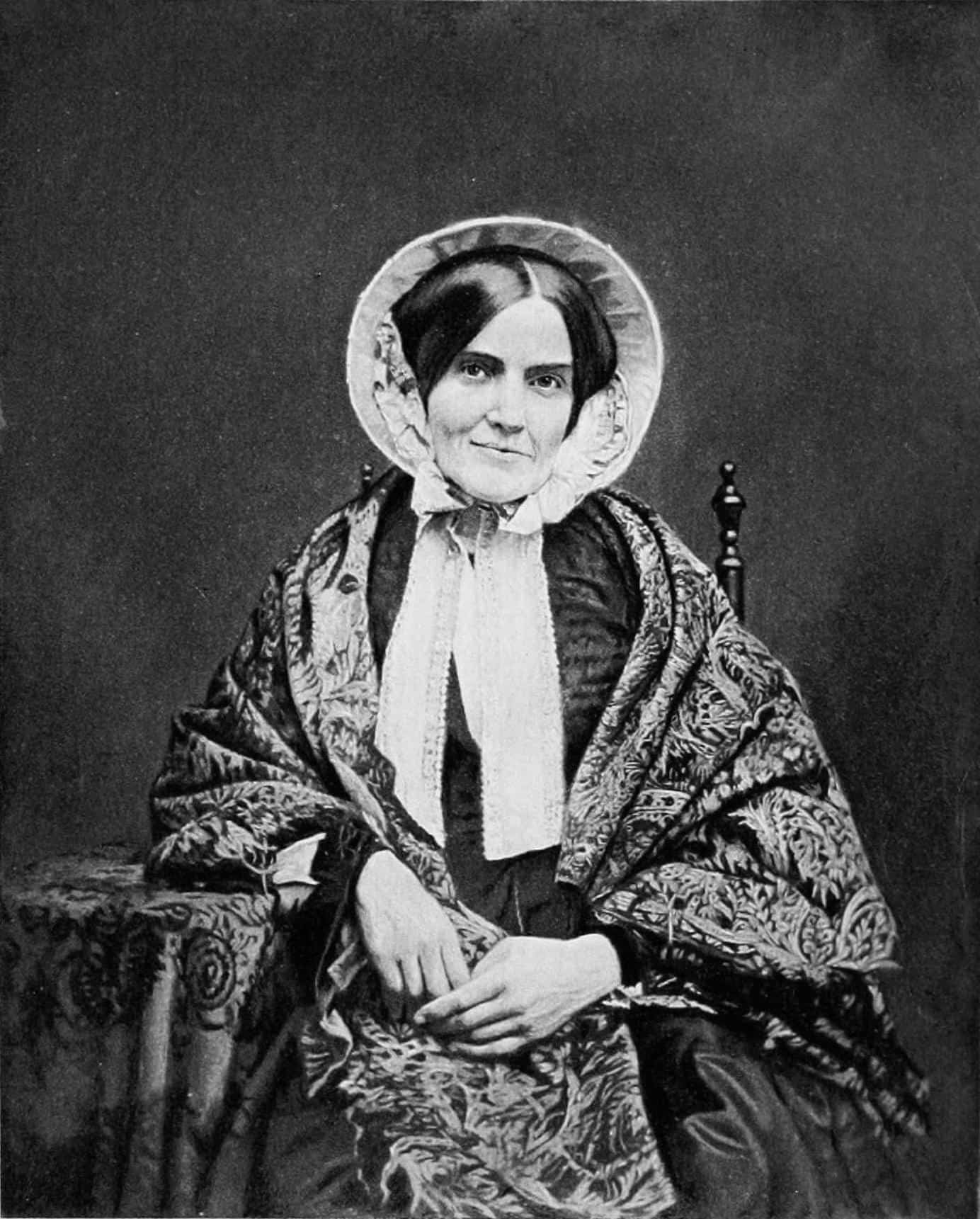
The movement goes back to the 19th century, as part of an academic skepticism over other literary figures like Homer, as well as of texts like the Bible.
They call themselves the anti-Stratfordians, referring to Shakespeare’s hometown, and their opposition to his supposed authorship. They also argue that a conspiracy exists to hide the truth, which they also argue as explaining the apparent lack of evidence to back up their claims.
Some of those scholars point to his common background as evidence.
In Shakespeare’s time, Stratford-upon-Avon was a small town with a population of 1,500 people. Its economy depended on sheep, whether for their wool or their meat, which the anti-Stratfordians used as evidence for painting the town as a cultural backwater.
They also point to Shakespeare’s parents, neither of whom had a literate background. This leads anti-Stratfordians to argue that Shakespeare had come from an illiterate background, which they think could not have produced the genius history paints Shakespeare as.
Even more so, considering how sophisticated the settings of his stories, which they argue that someone as backward as Shakespeare appeared. could never have written about.
Other scholars argue that he lacked the educational background to succeed as a writer.
They even question if he ever attended King’s New School at all, based on how no school records actually show that he attended the school. Other graduates of the school at the time also never mentioned Shakespeare. Shakespeare also never mentioned any friends or schoolmates from King’s New School.
The anti-Stratfordians also argue that even if Shakespeare attended the school, its Latin-based curriculum could never have given him the grasp of vocabulary that his supposed work has. They also point to his messy signature as further proof for their argument. Talk about elitism, as we see it here, at Shakespeare Facts.
Some even argue that another writer used Shakespeare as a pseudonym to hide behind.
One theory even argues that a group of writers used Shakespeare as a front to publish their work. Said group supposedly included Sir Walter Rayleigh, Edmund Spencer, Lord Buckhurst, and the 17th Earl of Oxford among others. Other theories have those ones or another of those same figures as the sole writer who used Shakespeare’s name to hide behind.
Generally, anti-Stratfordians argue their proposed writer’s motivation lay in avoiding the so-called taboo of print. Specifically, noble writers at the time had the expectation of writing only for their peers and social class. Publishing their works for profit became a source of shame and scandal, leading to the group’s formation.
Those scholars also argue that Shakespeare had a business relationship with the real author.
They argue that in addition to letting them use their name, Shakespeare’s real talent lay in managing the day-to-day affairs of the theater. Those included financial matters, like lending and paying back the money, buying and selling land. That Shakespeare also took to the stage to portray characters in plays adds weight to this argument.
Most scholars dismiss the claims against the authenticity of Shakespeare’s authorship.
With regard to his educational background, they point out that the curriculum of many schools in England already enjoys standardization at this time, thanks to a royal decree.
They also point out that the seeming messiness of Shakespeare’s signature comes from his use of secretary hand, a special kind of handwriting common to writers at the time.
Also, Shakespeare’s peers and patrons repeatedly recognized him for his work, with plenty of documentation to support Shakespeare’s authorship. Shakespeare also received the right to call himself a gentleman, and even use an official Coat of Arms, after his father died in 1601.
This title became part of his public persona, appearing with his name on all published works. In the rigid social structure of England at the time, Shakespeare could never have gained such status without truly living up to his literary reputation.
The question of Shakespeare’s authorship eventually entered the legal system in the 20th century.
In 1987, three justices of the US Supreme Court convened a moot court to hear the anti-Stratfordian position. They ruled that all evidence came from mere conspiracy theories, which meant the anti-Stratfordians had no real case.
Later that same year, three law lords held another trial at the Inner Temple in London, to again try the anti-Stratfordian position. Once again, the court dismissed the anti-Stratfordian position and upheld Shakespeare’s authorship of his works.
Skeptics have gone to great lengths to find evidence of Shakespeare never actually having written his works.
In the late 19th century, Dr. Orville Owen built his decoder machine to study Shakespeare’s works. He did so convinced that the works had a hidden code that hid away secrets. These secrets included details about the true author behind the works. Later on, he also tried dredging the River Wye after supposedly decoding proof that a box containing manuscripts lay under the river. He and his assistant also later claimed that more manuscripts lay hidden behind the walls of the Canonbury Tower in Islington.
They’ve also attempted to bypass the academic community in the late-20th century onwards.
It started in 1976, with Charlton Ogburn Jr. in the USA condemning the academic elite as monopolizing literary society. He then led the way in pushing the anti-Stratfordian position while completely ignoring any counterarguments from the academic community.
Other anti-Stratfordians followed his lead, first on TV, and the radio during the last decades of the 20th century, and then the internet in the 21st century. They even tried to gather online signatures to support their position in 2007, which failed to gather their expected majority.
Instead, they only managed to gain an estimated 3,000 signatures, including an estimated 600 self-described academics. In contrast, a poll held in that same year among 265 college professors had 90% dismissing the anti-Stratfordian position.
James Shapiro later did a study on the skepticism about Shakespeare’s authorship in 2010.
An English and literature professor from Columbia University, Shapiro studied the anti-Stratfordian phenomenon on a sociological basis. He eventually concluded that the academic community had its share of the blame, specifically their constant dismissal of the anti-Stratfordian position.
This allowed the anti-Stratfordians to constantly attack their position, while the academic community did little to counter the anti-Stratfordian position. Shapiro also noted the surprising appeal of the anti-Stratfordians to certain parts of the general public. He concluded that it dated back to the legacy of the Watergate Scandal in the 1970s, which damaged public trust, not just in the government, but also towards authority figures in general.
A film was later produced based on the question of Shakespeare’s authorship.
The 2011 film Anonymous jumps back and forth between present-day and 17th century England to debate whether the 17th Earl of Oxford is the true author behind Shakespeare’s works.
It also dabbles in another conspiracy theory of Queen Elizabeth secretly having several illegitimate children. Ultimately, the film received mixed to negative reviews from critics and bombed at the box office.
Shakespeare never commissioned a portrait of himself.
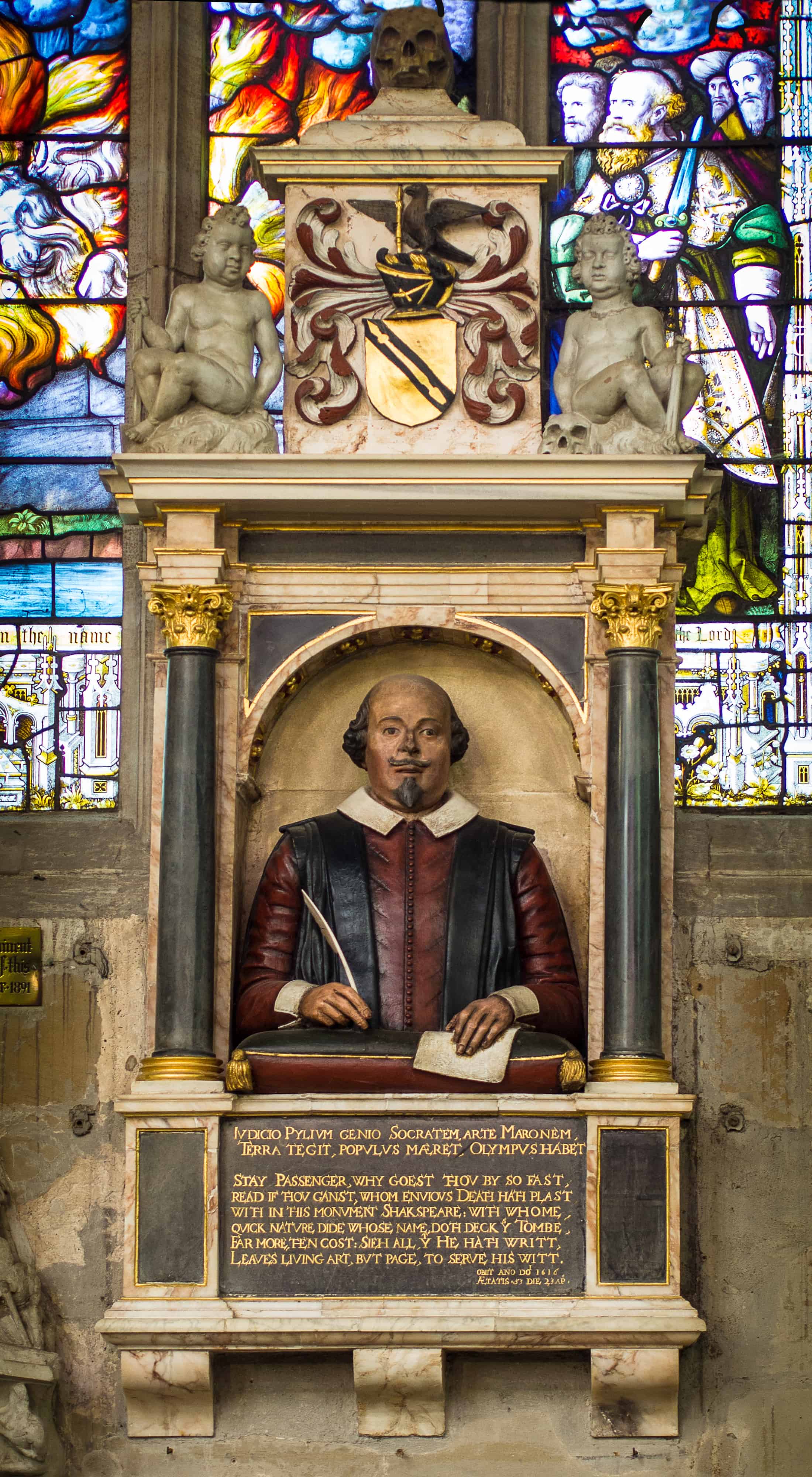
In fact, out of three portraits that unquestionably have Shakespeare as the subject, two only became commissioned after his death. First, we have the Droeshout portrait, made by Martin Droeshout for the title page of the First Folio.
Then there’s Shakespeare’s own funeral monument, sculpted by Gerard Johnson in 1616, and commissioned by Shakespeare’s son-in-law, John Hall.
Historians consider the Chandos Portrait as the only portrait of Shakespeare possibly made during his life.
John Taylor painted it between 1600 and 1610, and it actually became the basis for Martin Droeshout’s engraving of Shakespeare for the First Folio.
The name comes from the portrait’s previous owner, the Duke of Chandos, in the 18th century. The Chandos family kept the portrait until 1848 when the Earl of Ellesmere bought it from them. He then donated the portrait to the National Portrait Gallery.
The Cobbe and Sanders Portraits also may date back to Shakespeare’s lifetime.
The Cobbe Portrait takes its name from the Cobbe family, which has owned it since the 18th Century. Scholars from the National Trust, the Royal Shakespeare Company, and even Cambridge, agree that it dates back to Shakespeare’s lifetime.
However, other scholars such as Tarnya Cooper from the National Portrait Gallery disagree. Cooper, in particular, argues that the man in the portrait isn’t Shakespeare, but Thomas Overbury.
As for the Sanders Portrait, its name comes from its painter, either John or Thomas Sanders. Studies done on the label and frame support the label’s date of 1603, but many scholars argue that the man in the portrait looks too young for Shakespeare in that year.
Historians have debated Shakespeare’s religious beliefs over the centuries.
Officially, Shakespeare stayed a dutiful member of the Church of England until his death. His will follows the Protestant formula, he had his children baptized in the Church of England, and when he died, his funeral had a Protestant ceremony.
However, circumstantial evidence suggests he might have had Catholic sympathies. His mother, for one thing, came from a pious Catholic family. Shakespeare’s father and siblings may also have stayed secret Catholics after England banned the Roman Catholic Church in the country. Shakespeare’s daughter, Susanna, may also have followed the Catholic faith, but the evidence remains weak, based on failing to take Easter Communion at Stratford. With that, scholars continue to debate Shakespeare’s religious affiliations to this day.
Shakespeare may have married his wife in a Catholic ceremony.
The evidence comes in the form of the priest who oversaw the ceremony in 1582, named John Frith. Just a few years later in 1586, Frith became exposed as a Catholic priest who gave the appearance of a Protestant priest. Shakespeare and Hathaway also didn’t get married in Stratford, but at Temple Grafton a short distance away. Some scholars think they did so to secretly marry in a Catholic ceremony.
Some evidence exists of Catholic sympathies in Shakespeare’s works.
In the play Hamlet, the main character’s father gets mentioned as stuck in purgatory, a Catholic concept rejected by Protestantism. Most scholars note that the play as a whole has Protestant themes, but others argue this may have only served to hide the Catholic element.
Shakespeare also expresses sympathy to the Jesuit Edmund Campion in his play Twelfth Night. Scholars also note codewords in Shakespeare’s works used by secret Catholics in 17th Century London.
A few scholars have also considered Shakespeare following atheism or even paganism.
The idea of Shakespeare’s atheism first came up in 1848, based on his spotty record at regularly attending church services. Scholars generally reject this as proving in any way that Shakespeare had followed atheism.
Similarly, they reject the accusation of Shakespeare’s inclusion of pagan elements in his work as proof of his own paganism. They instead argue that Shakespeare included pagan elements like fairies and gods in his stories to add to their fantastic appeal in a purely artistic way.
Shakespeare also presented Muslim characters in his works fairly.
Examples include the Prince Of Morocco in The Merchant of Venice, and even Othello, in the play of the same name. In both, and other cases, Shakespeare avoids making the characters look like stereotypes, instead, he made them complex and realistic. Scholars note this represents a rare and inspiring example of a writer presenting Muslims.
Academics have sometimes questioned Shakespeare’s sexuality.
A few scholars have wondered if Shakespeare might have had homosexual interests. This comes from some of his sonnets, such as Sonnet 18, which he wrote for a young man he called the Fair Youth.
Other scholars, though, reject the idea, instead argued that Shakespeare might instead have had bisexual interests. Shakespeare’s marriage with Anne, and their three children, prove he wasn’t homosexual.
Shakespeare’s first play comes off as bizarre and even disturbing to modern audiences.
Shakespeare wrote and published The Two Gentlemen of Verona between 1589 and 1593. The bizarre part of the comedy comes from where one of the two main characters, Valentine, offers his lover Sylvia to his friend Proteus, the other main character.
The problem lies in that Proteus in that scene had just threatened to rape Sylvia. Naturally, this sends a disturbing message, but some scholars disagree. They argue that this results from a misunderstanding in what Valentine says. According to them, Valentine isn’t offering Sylvia to Proteus, as much as he offers to cherish his friend, as much as he loves Sylvia.
Scholars also note an amateurish quality present in The Two Gentlemen of Verona.
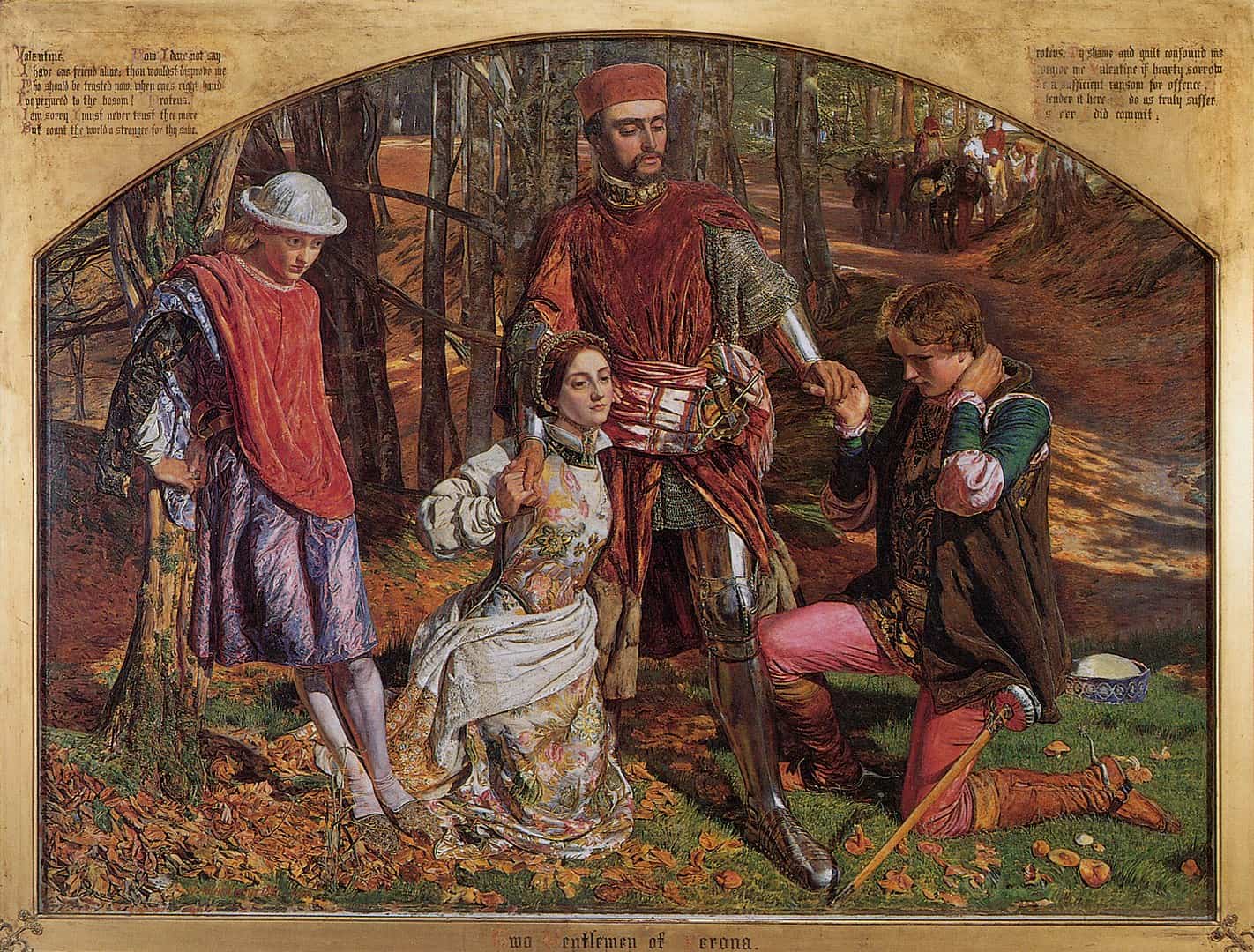
Stanley Wells, in particular, notes that the play’s dramatic structure lacks ambition, compared to Shakespeare’s other works. He also notes that the main characters don’t have as much development, compared to the main characters of Shakespeare’s other works.
Scholars generally agree that any flaws in the play naturally resulted from Shakespeare’s inexperience at the time, having only recently started his theatrical career. Big things have small beginnings, after all.
Shakespeare again courts controversy with modern audiences in The Taming of the Shrew.
The story centers around Petruchio and Katherina’s marriage, with Katherina as the shrew in the title. Petruchio spends the plot using psychological torture against Katherina, turning her from an unpleasant and disobedient woman, into his ideal bride.
These include not letting her eat or drink, denying her the clothes she wants, and other ways to keep her from becoming comfortable. Even in Shakespeare’s day, this story caused audiences to become uncomfortable, which has only become worse in the present day.
Critics accuse Shakespeare of playing up to the worst stereotypes of women and perpetuating them for future generations. His defenders, however, point out that the play counts as a comedy, and that Shakespeare might actually have tried to show how laughable such stereotypes become in reality.
Shakespeare played with the order of his story in his Henry VI trilogy.
The trilogy actually starts with Part 2, which he wrote and published in 1591. Its sequel, Part 1, also came out later that same year. However, Part 1 did not come out until the following year, 1592, thus becoming a prequel to the plot of Part 1.
Romeo and Juliet probably count as Shakespeare’s most famous work.
Despite that, it also has a mixed reputation of its own, even in Shakespeare’s day. 17th-century author Samuel Pepys described it as the worst play he’d ever watched.
In the 19th century, Charles Gildon and Lord Kames accused it of violating the rules of classic tragedy. Specifically, Romeo and Juliet did not fall because of their character flaws, but because of their circumstances, that of star-crossed lovers.
Other critics note how the story starts out as a comedy, only to become a tragedy midway through. They then point out that this becomes a source of jarring confusion to many audiences.
Romeo and Juliet have also drawn flak from psychoanalysts.
They point out how Romeo’s overaggressiveness may actually exist as evidence for a form of wish fulfillment on his part. This then led to the tragic events of the play, first with Mercutio’s death, and then finally his and Juliet’s double-suicide.
Other psychoanalysts note how Romeo and Juliet’s attraction for each other seems rooted in their family’s hatred for each other. This, they argue, leads to the conclusion that any relationship they could have had would only become unhealthy in the long term.
Feminists have also targeted Romeo and Juliet.
They argue that the patriarchal society that the lovers lived in played a part in the tragedy. Mercutio’s death, in particular, caused Romeo to become violent, with feminists criticizing how Shakespeare seems to equate adulthood with violence.
They also criticize how Romeo blames Juliet for making him weak after Mercutio dies. Juliet’s inability to take decisive action on her own also became a source of criticism from feminists.
A Midsummer Night’s Dream contends with Romeo and Juliet as Shakespeare’s most famous work.
It’s also far less controversial, with one critic noting that no matter how ridiculous A Midsummer Night’s Dream seemed, it never failed to make him laugh. Other critics also hold up the play as an example of a classic fantasy story.
Others praise it for its faithfulness to classic themes of the carnival, as well as of ancient Roman festivals. English critic and dramatist, Charles Gildon, in particular, praised Shakespeare in the 18th Century, noting that he must have read Roman classics in their original Latin to understand such themes so well.
The Merchant of Venice has led to accusations of antisemitism going Shakespeare’s way.
The problem lies in the character Shylock, a Jewish moneylender who becomes the story’s main antagonist. Shylock comes off as vengeful, to the point of demanding a literal pound of flesh from Antonio for failing to pay his debt.
Critics also note this plays up medieval stories of Jews supposedly cutting up Christians to drink their blood. Shakespeare’s defenders, however, point out how, despite having the role of the antagonist, Shylock actually comes off as sympathetic.
They point out how Shylock suffers from Antonio’s open antisemitism, and even has his business suffer from Antonio’s competition. They also point out how Shakespeare explicitly shows Antonio as a hypocrite. He condemns Shylock’s vengefulness, all the while dismissing how he himself mistreated Shylock in the past.
Hamlet, though, counts as Shakespeare’s most performed work.
In particular, Hamlet has always topped the performance list of the Royal Shakespeare Company since 1879. Many other famous writers have called it their inspiration, including Charles Dickens and Johann Goethe, among others.
Hamlet’s reception varied over the centuries.
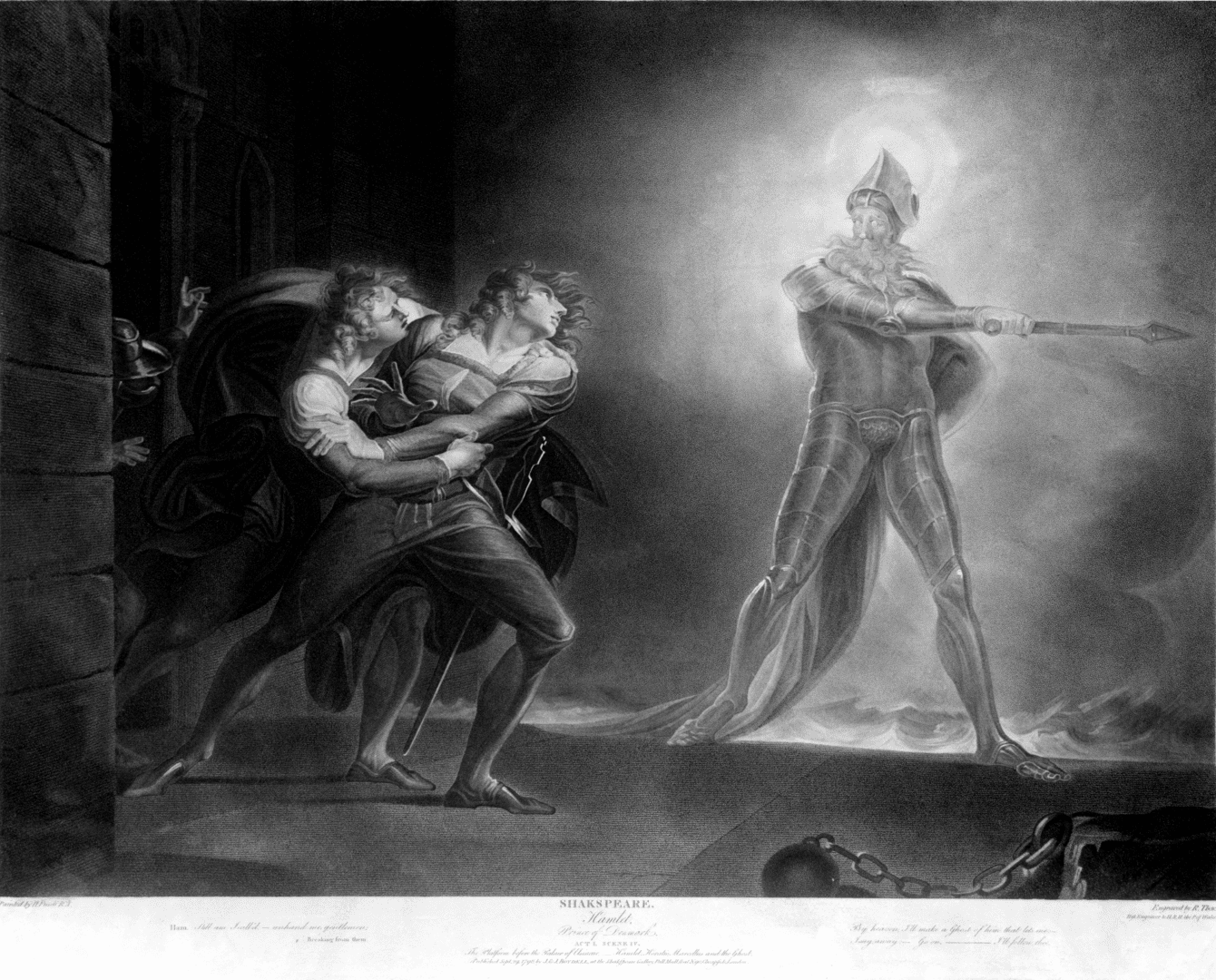
Audiences in the early 17th century praised Hamlet’s inclusion of a ghost in the story, and the play’s themes of madness and melancholy. By the latter part of the century, however, critics slammed the play as inappropriate and in bad taste. This again changed in the early 18th century, with Hamlet becoming an example of the classical hero.
The popularity of Gothic literature at the time also added to the play’s appeal. Then, in the latter part of the century, things again changed, with critics slamming the plot as confusing.
The 19th century’s Romantic movement again revived appeal in Hamlet, with his character’s details becoming a source of debate well into the 20th century.
Hamlet also counts as Shakespeare’s longest play.
It takes four hours to complete the play on stage, with its estimated 4,000 lines holding an estimated 30,000 words. This forces many adaptations to abridge the play, in order to keep the play from becoming too long for some audiences.
Shakespeare dabbled in philosophy in Hamlet.
Scholars noticed this in hindsight, with Hamlet’s conversations with Rosencrantz having existentialist themes. Some scholars suggest that Shakespeare may have predicted various philosophical doctrines in the future, not just existentialism, but also relativism and skepticism.
Most scholars, however, instead argue that Shakespeare could have written under the influence of the philosopher Michel de Montaigne. De Montaigne led the way in developing the skepticism school of philosophy during the Renaissance. As one of Shakespeare’s contemporaries, the writer would have known about De Montaigne and his works.
Psychoanalysts have studied Hamlet.
Sigmund Freud actually psychoanalyzed Hamlet in his book, The Interpretation of Dreams. He did so along with the Greek tragedy Oedipus Rex with Freud using both plays as part of his research into neurosis.
Freud contrasted the main characters of both, and how they dealt with what he called the Oedipus Complex. Oedipus unknowingly kills his father and marries his mother, which Freud interpreted as acting on the urges of the Oedipus Complex. In contrast, Hamlet unknowingly suppresses the urges of the Oedipus Complex, as shown in his reluctance to avenge his father.
Some people consider Shakespeare’s Macbeth as a cursed work.
The belief comes from the scenes where Macbeth consults with witches, who cast spells to answer Macbeth’s question. This had led to a superstition that Shakespeare quoted actual spells in the play, with real witches cursing his work for him doing so.
This has also led many actors to refuse to use the play’s name, instead just calling it The Scottish Play. Stories go back over the centuries of accidents and misfortune on those who use the play’s name or even just participate in it.
Historians, however, dismiss the legend and actually point out that statistics show more people have died or have suffered injuries while acting out Hamlet than Macbeth.
Shakespeare’s The Tempest has also had varying interpretations over the centuries.
Shakespeare and his peers classified the play as a tragedy, however, scholars later reclassified it as a romance. This comes from the themes of the play, in particular, the setting’s focus on coastal regions in exotic, faraway places with fantastic elements.
Other scholars argue that Shakespeare made himself ahead of his times, with surprising postcolonial themes in The Tempest. This particularly appears with the character Caliban, Prospero’s slave, who comes off as the one character most in touch with nature.
This makes him stand out among other characters, such as Stephano and Trinculo. Feminists have also criticized the play, such as the fact that it only has one major female character, Prospero’s daughter, Miranda. They then take this further, criticizing how Miranda constantly subordinates herself to her father’s plans and decisions.
The Tempest later influenced the 20th-century author Aldous Huxley.
He even outrightly used a line from the play as the novel of his book, Brave New World. The book’s own themes about social changes resulting from widespread genetic engineering have led to both the novel and the play becoming associated with humanity’s potential reaction to changes from the use of advanced technology.
The Two Noble Kinsmen counts as Shakespeare’s final work.
He also had a co-author for the play, John Fletcher, a point once contested by scholars, but now accepted as a historical fact. Shakespeare and Fletcher actually wrote the play as a reimagining of an older story, The Knight’s Tale, from the medieval compilation The Canterbury Tales.
Shakespeare also wrote narrative poems while English theaters lay closed thanks to the plague.
He wrote Venus and Adonis in 1593, and then The Rape of Lucrece in 1594. Shakespeare dedicated both poems to one of his patrons, Henry Wriothesley, the Earl of Southampton.
Both poems draw on classical mythology, specifically Venus’ attempts to romance Adonis, and the rape of Roman woman Lucrece by the Etruscan Tarquin. In both poems, Shakespeare explores the themes of guilt and consequence that result from uncontrolled lust.
Shakespeare originally wrote his sonnets for a private audience.
One piece of evidence comes from how he used pseudonyms for the people he wrote them for. One of Shakespeare’s peers, Francis Meres, also explicitly mentioned in 1599, that Shakespeare privately wrote sonnets for his friends. This has unfortunately led to scholars not knowing the proper order in which Shakespeare wrote his sonnets.
The characters in Shakespeare’s sonnets have attracted plenty of debate.
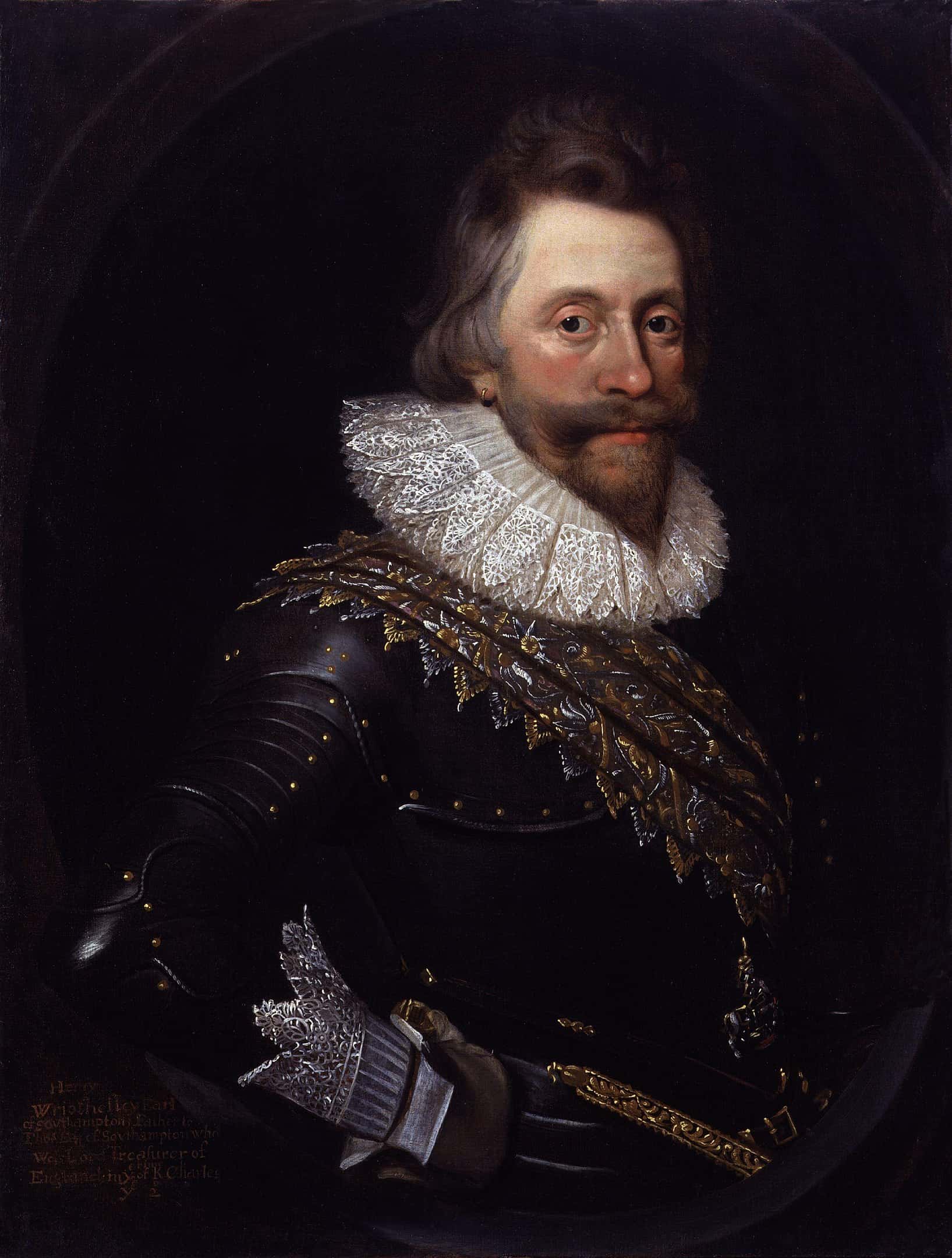
Shakespeare wrote them for three people, he called them Fair Youth, the Dark Lady, and the Rival Poet. Scholars have argued over their possible identities for centuries, with the Fair Youth also contributing to the argument of Shakespeare’s sexuality.
In particular, many scholars consider Henry Wriothesley, the Earl of Southampton, as the Fair Youth’s true identity. Others contest this due to his age at the time of the sonnets’ writing, instead of putting forward the name of William Hughes, a young actor who frequently played women’s roles in Shakespeare’s plays.
Mary Fitton, Emilia Lanier, and Elizabeth Wriothesley count among the many candidates for the Dark Lady. Samuel Daniel, Christopher Marlowe, and John Davies of Hereford similarly count among the candidates for the Rival Poet.
Some scholars also argue that the Rival Poet wasn’t a person at all, instead a general reference for Shakespeare’s rivals in the theatrical world.
Shakespeare writing sonnets come off as ironic.
The irony comes from how Shakespeare seemed to have disliked sonnets and referred to them negatively in his plays. This has led scholars to wonder if that became a reason for Shakespeare to address the people he wrote his sonnets for by pseudonyms.
Other scholars, though, instead, argue that Shakespeare wrote his sonnets as experiments. Specifically, a way for him to express himself in a different way from his usual literary work.
Shakespeare wasn’t actually that famous in his lifetime.
The English considered him one of their best writers, but he didn’t have the reputation he does today. In fact, the English of his day ranked him below the likes of Edmund Spencer, who wrote The Faerie Queene. That said, even at the time, Shakespeare found his works printed more often than those of other writers. Shakespeare and his company also took steps to keep their rivals from acting out his works on stage.
He helped lead the way in modernizing the English language.
He wasn’t the only one, of course, with other writers like Edmund Spencer, Christopher Marlowe, and Sir Philip Sidney also making their contribution.
At the time, the English language found itself evolving into what we now consider modern English. This made the language disorganized when it came to its grammar and vocabulary.
Shakespeare and his peers used what scholars called neologizing to resolve the issue. This involved them borrowing words or phrases from other languages such as Latin and Greek.
He also attracted criticism even in the 17th century.
The Puritan dominance of England in the middle of the century led to all plays getting banned in England. In the latter part of the century, however, Shakespeare’s works returned to the stage along with those of other writers.
A few critics, such as Thomas Rymer, criticized him at this time, on how his works failed to follow neoclassical rules on drama. Those rules, however, existed as a French invention, and never caught on in England, leading to such criticism getting ignored.
Shakespeare only really began to become a hit in the 18th century.
So much so, that actors who succeeded in acting out roles in Shakespeare’s plays practically became guaranteed to become celebrities for life. In fact, from the 1730s onward, Shakespeare’s plays made up 25% of all theatrical productions.
Shakespeare’s popularity also led to increased interest from scholars. In particular, the scholars led the way in finding and preserving faithfulness to Shakespeare’s original material. This resulted from a tendency among theaters to adapt the material to the wants of their audience.
Criticism of Shakespeare continued in the 18th century.
In particular, critics focused on the less refined humor in some of his works, which they called cheap puns. They also focused on the sexual references in some of his works, leading some publishers to edit them out. This led to a wave of countercriticism, however, with the edits getting reversed from the mid-18th century onwards.
Shakespeare became especially popular in Russia in the 19th century.
Ironically, Russian literary figures like Alexander Sumakhorov in the 18th century saw Shakespeare as an inspired barbarian. Empress Catherine the Great later sponsored Shakespeare’s works, but even then, Russians preferred to read than watch his works.
This changed in the 19th century with the growth of the Romantic movement. Alexander Pushkin publicly described Hamlet and other historical plays by Shakespeare as his inspiration. Fyodor Dostoevsky also found himself influenced by Shakespeare. One of his novels, Crime and Punishment was inspired by the play Macbeth.
Russian writer Leo Tolstoy disliked Shakespeare, however.
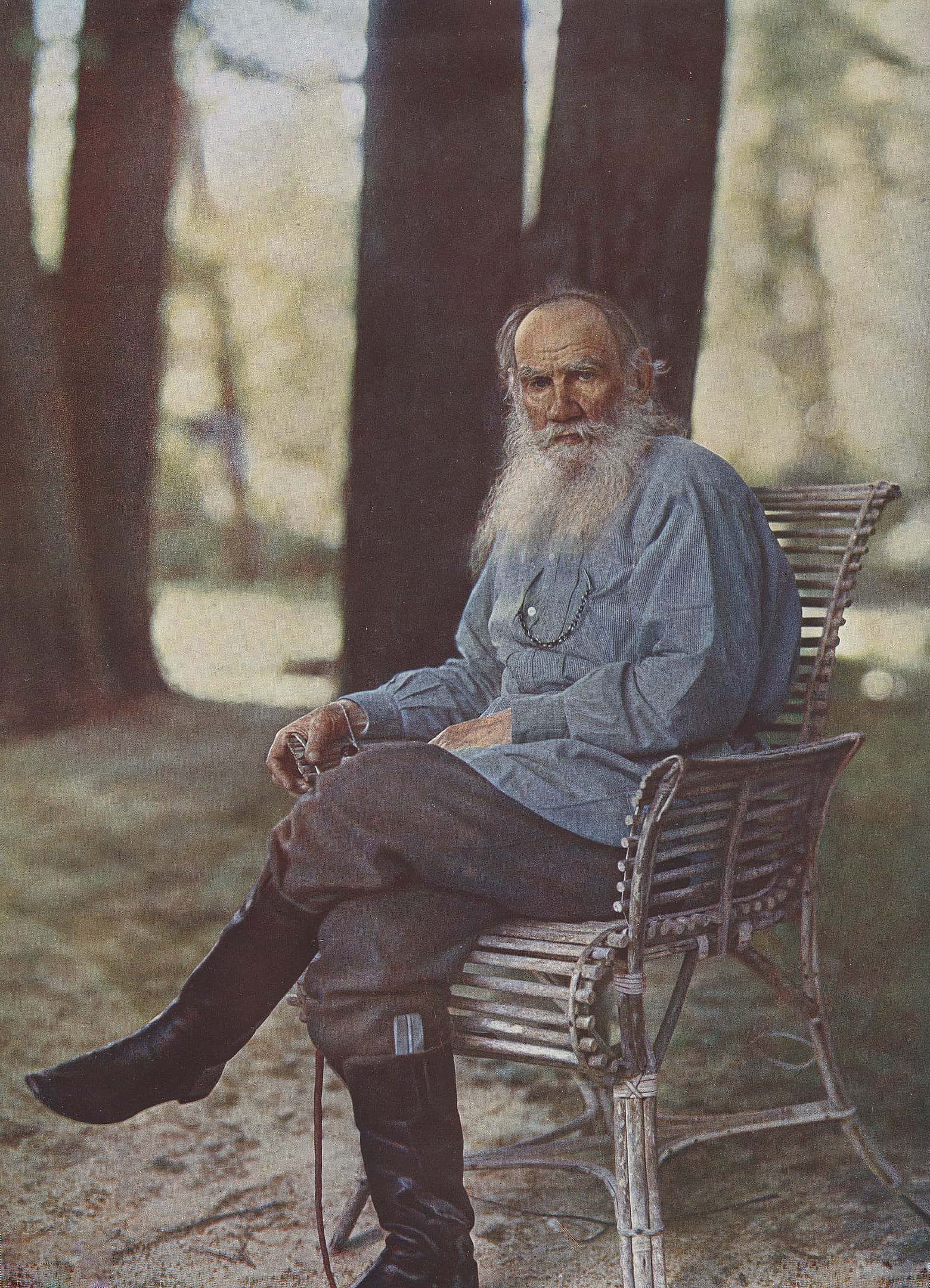
He admitted he started out with high expectations but ended up disappointed after going through what most consider Shakespeare’s best work.
These include Hamlet, King Lear, Macbeth, and Romeo and Juliet, among others. In fact, Tolstoy described the experience as tedious, and even repulsive. He also later described that authors imitating or getting inspiration from Shakespeare, as only twisting their individual aesthetics.
Shakespeare enjoyed a surprising exception in Hitler’s Germany.
Adolf Hitler had banned non-classical theatrical productions that weren’t of German origin, but Shakespeare found a defender in none other than Joseph Goebbels himself.
Goebbels and his followers saw Shakespeare as a great classical figure, even if they had to make small changes in the material to suit their political agenda. Later on, after World War II began, Shakespeare’s association with the British briefly got it banned.
Hitler intervened, however, personally seeing Shakespeare as more German than British. To him and other Nazi leaders, the England Shakespeare came from had more in common with Nazi Germany than it had with the modern British Empire.
Shakespeare struggled to gain an audience in France until after WWII.
And when it did it only came after massive changes, such as a French version of Romeo and Juliet in the 19th century that had a happy ending.
After World War 2, though, the experiences of the war had led to massive changes in French culture. In particular, scholars point to the war breaking the belief in the inevitable triumph of progress. Instead, the French now began to see the world as a more chaotic and uncertain place. This led to a better reception of Shakespeare’s works in their original form among French audiences.
Shakespeare also only began to gain popularity in China in the late 20th century.
Specifically, after Chinese communist revolutionary Mao Zedong’s death in 1976. At that time, the theater became a way of denouncing his legacy in a socially acceptable way.
Macbeth, in particular, found a large audience in China, with his tyranny becoming representative of Mao’s own. The ambitious Lady Macbeth also became representative of Mao’s own wife, the ambitious Jiang Qing.
King Lear also found an audience in China, as a moralistic story about how people who abuse their parents fall to become the lowest of the low.
Other works of Shakespeare that became a hit in China include The Merchant of Venice. Unlike Western audiences, Chinese audiences did no see it as anti-Semitic in any way. Instead, they saw the play as a story about the importance of justice and fairness in life.
Was this page helpful?
Our commitment to delivering trustworthy and engaging content is at the heart of what we do. Each fact on our site is contributed by real users like you, bringing a wealth of diverse insights and information. To ensure the highest standards of accuracy and reliability, our dedicated editors meticulously review each submission. This process guarantees that the facts we share are not only fascinating but also credible. Trust in our commitment to quality and authenticity as you explore and learn with us.
